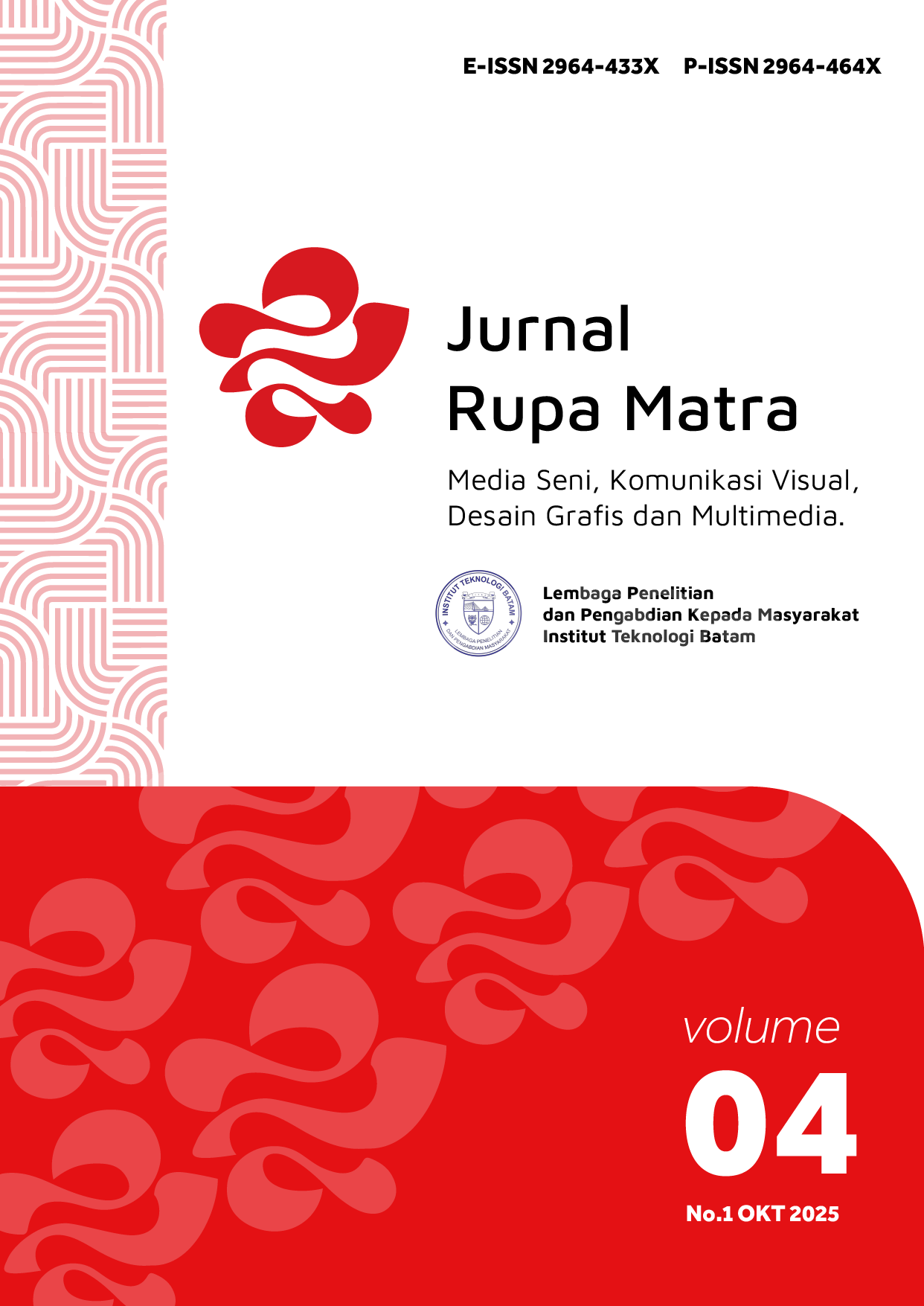PERANCANGAN KAMPANYE SOSIAL TENTANG DAMPAK TOXIC ONLINE DISINHIBITION DI KALANGAN REMAJA
DOI:
https://doi.org/10.62375/jdkv.v4i1.753Keywords:
toxic, disinhibition, Kampanye sosial, literasi digital, remajaAbstract
Fenomena toxic online disinhibition semakin meluas di kalangan remaja, ditandai dengan meningkatnya perilaku agresif dan menurunnya empati dalam interaksi digital. Kondisi ini tidak hanya berdampak pada kesejahteraan mental, tetapi juga memperburuk kualitas komunikasi sosial. Penelitian ini bertujuan merancang kampanye visual yang komunikatif dan reflektif untuk meningkatkan kesadaran remaja terhadap dampak toxic online disinhibition serta mendorong perilaku digital yang lebih sehat. Metode penelitian meliputi analisis literatur, wawancara mendalam dengan psikolog dan target audiens, serta pengembangan konsep berdasarkan Fogg Behavior Model yang menekankan elemen motivasi, kemampuan, dan pemicu. Hasil perancangan meliputi media utama berupa video kampanye “Dear Berry” dan sejumlah media pendukung digital yang konsisten secara visual dan emosional. pendekatan visual storytelling mampu membangun empati dan kesadaran perilaku daring. Penelitian ini berkontribusi pada pengembangan strategi komunikasi digital yang etis, edukatif, dan berorientasi pada perubahan perilaku positif remaja.
References
Chu, X., Li, Q., Fan, C., & Jia, Y. (2023). Life Stress and Cyberbullying: Examining the Mediating Roles of Expressive Suppression and Online Disinhibition. J Youth Adolesc, 52(8), 1647–1661. https://doi.org/DOI:%252010.1007/s10964-023-01791-w
Ding, J., Lin, Y., & Chen, I.-H. (2025). Why individuals with trait anger and revenge motivation are more likely to engage in cyberbullying perpetration? The online disinhibition effect. Frontiers in Public Health, 13, 1496965. https://doi.org/10.3389/fpubh.2025.1496965
Knoll, L. J., Gaule, A., Lazari, A., Jacobs, E. A. K., & Blakemore, S. J. (2020). Neural correlates of social influence on risk perception during development. Social Neuroscience, 15(3), 355–367. https://doi.org/10.1080/17470919.2020.1726450
Lahti, H., Kokkonen, M., Hietajärvi, L., Lyyra, N., & Paakkari, L. (2024). Social media threats and health among adolescents: Evidence from the health behaviour in school-aged children study. Child Adolesc
Psychiatry Ment Health, 18(1), 62. https://doi.org/doi:%252010.1186/s13034-024-00754-8.
Meekers, D., Onuoha, C., & Olutola, O. (2020). Applying the Fogg Behavior Model to improve contraceptive social marketing during the COVID-19 lockdown in Nigeria: A case study. Gates Open Research, 4, 141. https://doi.org/10.12688/gatesopenres.13186.1
Putri, R. A., Sapitri, R., Adi, M., & Nalendra, S. (2025). PERANCANGAN BRANDING MUSEUM RAJA ALI HAJI SEBAGAI PUSAT WISATA BUDAYA MELAYU KOTA BATAM. JURNAL RUPA MATRA, 3(2), 105–126. https://doi.org/10.62375/JDKV.V3I2.590
Renjith, V., Yesodharan, R., Noronha, J. A., Ladd, E., & George, A. (2021). Qualitative Methods in Health Care Research. International Journal of Preventive Medicine, 12(1). https://doi.org/10.4103/ijpvm.IJPVM_321_19
Ruotsalainen, M., & Meriläinen, M. (2024). Online Disinhibition, Normative Hostility, and Banal Toxicity: Young People’s Negative Online Gaming Conduct. Social Media + Society, 10(3). https://doi.org/10.1177/20563051241274669
Soh, S., Talaifar, S., & Harari, G. M. (2024). Identity development in the digital context. Social and Personality Psychology Compass, 18(2), e12940. https://doi.org/10.1111/spc3.12940
Wang, L., Jiang, S., Zhou, Z., Fei, W., & Wang, W. (2024). Online disinhibition and adolescent cyberbullying: A systematic review. Children and Youth Services Review, 156, 1–9. https://doi.org/10.1016/j.childyouth.2023.107352
Wang, X., Qiao, Y., Li, W., & Dong, W. (2022). How is online disinhibition related to adolescents’ cyberbullying perpetration? Empathy and gender as moderators. The Journal of Early Adolescence, 42(5), 704– 732.
Xu, X., Han, W., & Liu, Q. (2023). Peer pressure and adolescent mobile social media addiction: Moderation analysis of self-esteem and self-concept clarity. Frontiers in Public Health, 11, 1115661. https://doi.org/10.3389/fpubh.2023.1115661
Zakiah, E., & Iswari, R. D. (2022). The Role of Online Disinhibition Towards Cyberbullying on Second-Account Users on Instagram. 4(4).
Downloads
Published
How to Cite
Issue
Section
License
Copyright (c) 2025 Rini Nurcholiq, Widiya Lestari Harahap, Dany Kurnia Gunawan

This work is licensed under a Creative Commons Attribution 4.0 International License.














